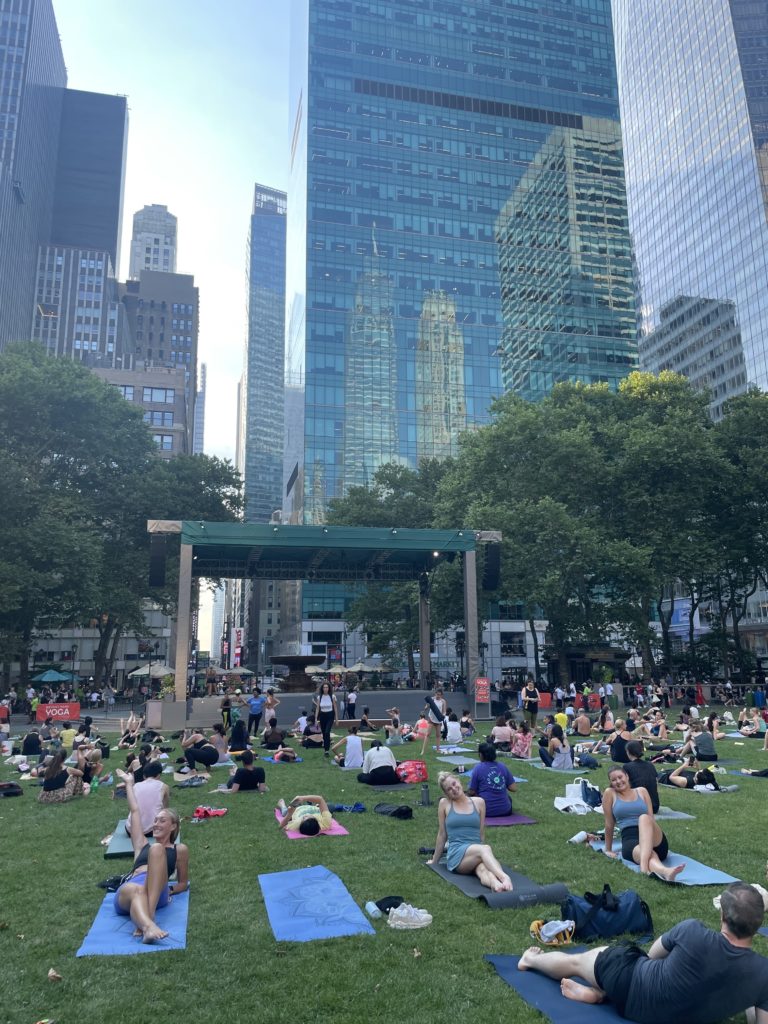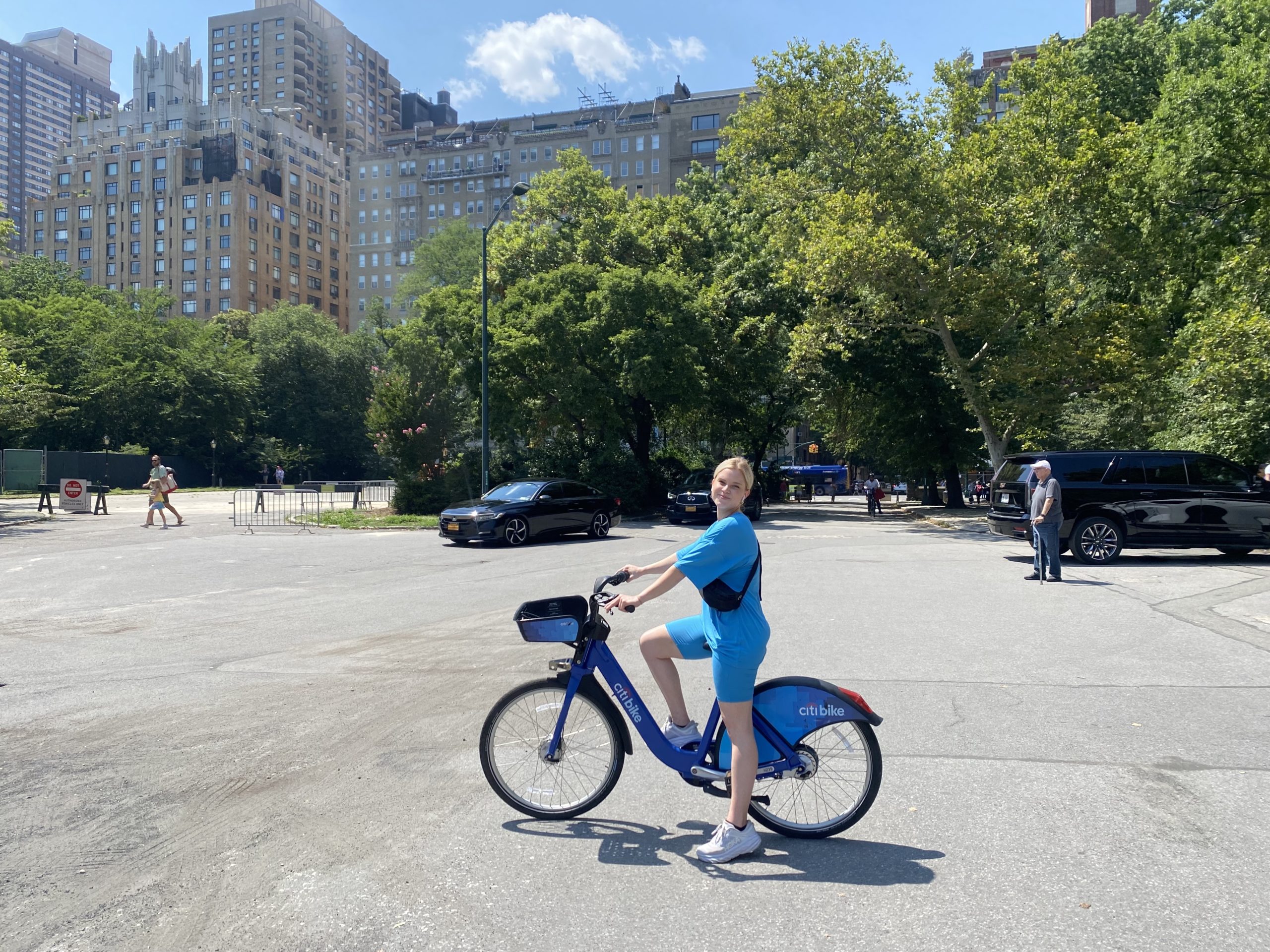Begin Again: Cross-Training Choices
I’ve got to be honest—cross-training has not been top of mind for me since returning to dance. I’ve had to ration my energy, protect it like a limited resource. Dancing in and of itself is incredibly exhausting, and I don’t want to get injured, crash my immune system, go backward in my health or burn out emotionally. So, I’ve been taking it slow. But when my physical therapist, Heidi Green, told me she thought some of the minor injuries I was developing were stemming from instability and weakness, I knew it was time to put in some work outside of the studio.
Thus began my search for the right cross-training options for me. I worked with Heidi on activities that might counteract my weaknesses. The result was a variety of interesting and fun experiences that have propelled me forward in my goals of stabilization, strength, stamina and emotional support. Here I share those activities and what I thought of them!
But before we dive in, I have two important caveats. First, cross-training, like everything else in life, is individual to each dancer. What benefits me may not benefit you. For example, I’m hypermobile and need to strengthen muscles that go slack when I sink into my hyperextension. You may instead be strong and stable, but lack flexibility. We would of course need very different things from our cross-training ventures. Get direction from an expert who knows your specific needs (like a licensed physical therapist), so you aren’t wasting time or, worse, causing injuries. Second, cross-training is very often synonymous with weight-loss efforts. For me, cross-training is for functional fitness and happiness only. My body did not survive nine years of brutal symptoms, treatment and eventual miraculous healing for me to spend my time trying to change the way it looks. You might consider applying the same rule to your own efforts.
Okay, I will get off my soapbox now. Enjoy my list of cross-training options!
Heidi says most dancers should consider Pilates as a cross-training option, and she recommended I work with instructor Jennifer Kreichman. Coincidentally, Jennifer takes the same daily ballet class with me at Steps on Broadway. According to Jennifer, Pilates is great for dancers because the exercises work toward strength, flexibility, range of motion, alignment, recovery from injury and injury prevention. “When I look at dancers in class and onstage, I see that even the most talented artists are missing important physical and kinetic information,” she says. “Each body comes with a unique set of challenges, and working with the resistance provided by Pilates apparatuses such as the reformer, the tower and the cadillac helps the dancer locate and properly activate individual muscle groups to attain these objectives.”
I started taking lessons with Jennifer, and I can honestly say Pilates has been hugely beneficial to my dancing. She also observes me in ballet class and takes note of weaknesses (like my hamstrings not firing while doing tendus in center), then provides exercises to counteract them.
Dance Cardio: CitySweat

Beyond stabilization and strength, I want cross-training options that bring me joy and take me out of the hyper-focused headspace of the dance world. CitySweat, a dance-inspired fitness workout aimed at celebrating self, checks all of those boxes. The creator of the program, Meghan McFerran, moved to New York City in 2017 to pursue a professional dance career and worked as a dance fitness trainer on the side. “I found a deep love for it because I got to dance without the pressure of standing out, or putting up a façade to impress a panel of people,” she says. “I was being my most true self in those classes.” While working as the choreography production assistant on In the Heights in 2019, Meghan had an up-close look at the unpredictability and inconsistency of a professional dance career, and decided she wanted to explore something different. “I wanted a schedule I could stick to and a community that never left,” she says. So, she took her passion for dance fitness and turned it into a business of her own. Thus, CitySweat was born.
Meghan says CitySweat allows dancers to enjoy movement, find their true “glisten” and carry it into their next audition. Each class is 40 minutes or less and targets an array of muscle groups. “It’s like a warm-up for your day that targets the muscles you need to dance your best,” she says. The program also builds endurance, as each set of exercises flows into the next.
CitySweat classes can be found on the website or on the app. Meghan also teaches pop-up classes around the world, like the one I attended in New York City this past month. I documented the experience in my latest vlog on Dance Magazine’s YouTube page. Check it out!
When writing profiles for Dance Media, I often ask sources about their favorite cross-training options. If I had a dollar for every time someone said Gyro, I would be a rich woman. For those who are unfamiliar, the Gyrotonic method was created in the 1980s by dancer Juliu Horvath. It’s a form of exercise that incorporates movement flows reminiscent of yoga and swimming, but with the help of a machine that utilizes a system of weighted discs and pulleys to add resistance (think Pilates reformer, but different).
Of course, I had to give it a try, so I met up with Gyro instructor Nellesa Walthour. “One of the things Gyrotonic is good for is increasing range of motion in joints yet strengthening the musculature around those joints so you have a nice balance,” she says. “This helps prevent injury and allows for more efficient movements.”
With Nellesa’s help, the class had me moving in new ways and engaging muscles that I hadn’t focused on previously. That said, when I asked Heidi if she thought Gyro was the right fit for me, she told me that it’s not something she recommends right now since my joints are so mobile. She thinks it’s a better fit for dancers who are extra-held and struggle to articulate through their spine. Still, I really enjoyed the class and will definitely go back in the future.

Yoga
Next up, yoga! There are few forms of movement that feel quite as good on my body. I get to sit into stretches that feel nice, and take calming breaths. What more could a girl ask for? But in terms of my weaknesses (strength, stabilization and stamina), it’s not going to give me what I need. So, I’m dubbing it a cross-training option for my mental health. Not every activity I do needs to move me toward my goals; some can just be fun! This week, I attended a group yoga class in Bryant Park with friends, and it was an absolute blast. Want to see what it’s like to take yoga in the middle of a bustling city with hundreds of strangers? Check out my latest vlog on Dance Magazine’s YouTube channel.
Bike Riding
If I’m only taking class, I might not get the nonstop cardio workout necessary to eventually perform eight shows a week. I need to rebuild the stamina I lost over nine years of illness. Heidi recommended I try bike riding for 20 to 30 minutes with my heart rate up. (The ideal heart-rate level for cardio will vary from person to person, based on their age. More information on how to calculate this for yourself can be found here.) That said, she discouraged me from taking spin classes, like SoulCycle, while navigating a heavy dance schedule because they’re too taxing. “You already have your high-intensity exercise in dance,” she says. “You don’t want to do something that makes you too exhausted to get to class.” Instead, she recommended I hop on a Citi Bike—the rental bicycles available all over New York City—take a ride around Central Park, and monitor my heart rate on my Apple Watch.
This was such a fun cross-training option! It was completely out of my comfort zone (I learned how to ride a bike as a child, but I am very rusty) and allowed me to experience the city from a whole new vantage point. I will definitely be adding biking to my regular regimen.
*A quick caveat: While vlogging for this piece, I was a novice to the world of Citi Bikes and did not own a helmet. I documented my first time riding a bike as a form of cross-training without one and was quickly reprimanded by Heidi. She strongly urges everyone to wear a helmet when cycling outside. I will certainly not make that mistake again!
Walking
Like most of you, I’m a busy person, so when I find a cross-training option that allows me to multitask, you better believe I’m going to take it! My 65-pound golden retriever needs to be walked every day, so I’ve taken my trusty new cardio calculation and applied it to our jaunts around the city. It’s my favorite cross-training activity because it can be done with friends and family, while on the phone, or while listening to a podcast or thinking meditatively. Better yet, it’s completely free!
Other cross-training ideas include hiking, rock climbing, silks, trapeze and kickboxing. At the end of the day, you need to find what works for your budget, your schedule, your body and your mind. Take these ideas, talk with an expert and try them out! Head on over to Dance Magazine’s YouTube channel to get a better look at the exercises in action, and share your favorite cross-training exercises in the Comments section over on Dance Magazine’s Instagram!




